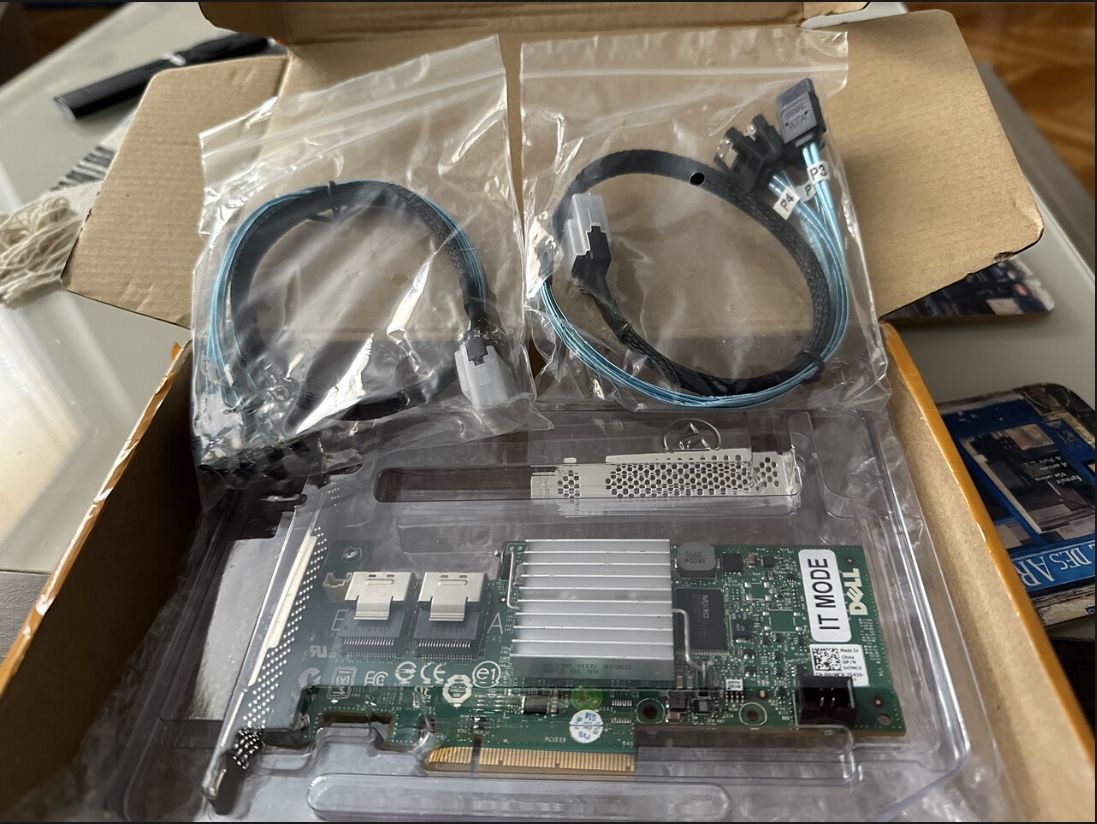Finally, the new hardware has arrived. A Dell PercH200 with IT mode firmware and an i7-3770 CPU.
So, what's changed now? In the performance department, there is nothing noticeable, but my environment is not that demanding. I used to run transcoding on Jellyfin that saturated the CPU on that VM, but since i got myself a video device capable of reproducing H.265 this is no longer an issue. On the other hand, the Jellyfin UI seems to be more responsive now, as well as my Zabbix monitoring system (running on the same VM as the Jellyfin). I will see if something more demanding comes up in the future. The Minecraft server is more of a memory hog, so the CPU upgrade might not impact it significantly.
EDIT: Without any empirical measuring, only judging by "feel" it seems like the new and upgraded home server is performing better. VMs start and shutdown faster, Minecraft server starts faster, as well as the above mentioned Jellyfin and Zabbix. All in all, i'm happy with it ;-)

The biggest benefit comes from the HBA. With all the OpenMediaVault disks now running on the HBA (that has been configured as pass-through in ESXi), there are no more RDM disks. This enables full and proper S.M.A.R.T. on the OMV side, with monitoring and self-tests and everything and there is no more /dev/sdX device renaming between reboots.

Additionally, all the SATA ports on the motherboard are now available for local ESXi usage. The USB datastore has been replaced with a small 128GB SSD off of which i now run OpenMediaVault, one of the Pi-Hole DNS/DHCP and the jumphost VMs. The SSD datastore has also been designated as the system wide swap destination. All this with 3 more SATA ports available on the motherboard and 2 on the HBA.
It would be interesting to see if the SSD can be used for some sort of caching on OMV. Apparently, with ZFS it is possible, but my disks are in mdadm RAID :-(

